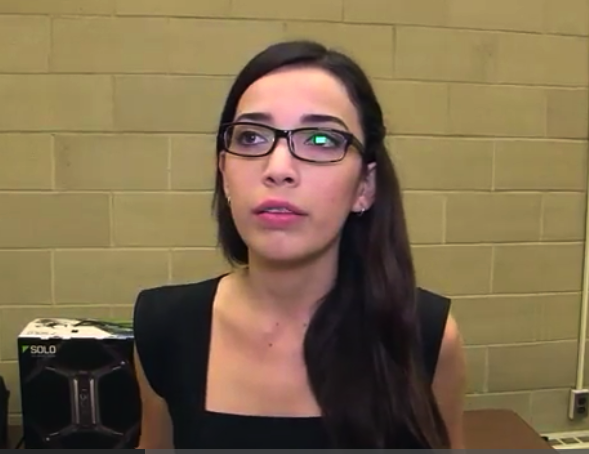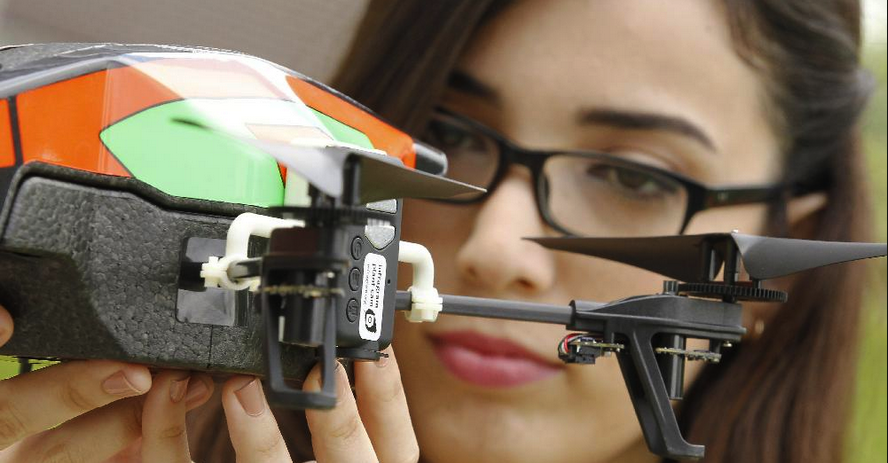 With global population exploding, perhaps few efforts are more essential today than those aimed at developing efficient and cost-effective ways of producing food while conserving the resources necessary to do so. While agriculture has been stepped up to an industrial scale, the technology that assists in the mass production of food is often unaffordable to small farmers.
With global population exploding, perhaps few efforts are more essential today than those aimed at developing efficient and cost-effective ways of producing food while conserving the resources necessary to do so. While agriculture has been stepped up to an industrial scale, the technology that assists in the mass production of food is often unaffordable to small farmers.
However, efforts to keep small farming feasible and potentially lucrative are being made on many levels. 22-year-old electronics engineering student Krissia Quesney Nevarez is making her own contribution to the effort. Quesney Nevarez’s 3D printed farming drone, a summer project she has undertaken while participating in a 12-week summer project at Carleton University in Ottawa, the capital city of Ontario, Canada.
Quesney Nevarez, who is from Ciudad Obregón, Mexico, is one of 44 college students from across the globe who are spending their summer in Ottawa. The program in which she is participating is sponsored by the Mitacs Globalink Research Internship initiative. It’s a competitive program for international undergraduate students from nine countries around the world, including Mexico, Brazil, India and Vietnam. The top-ranked applicants spend their college off-time on internships at Canadian universities, with teams of interns supervised by faculty members from different academic disciplines ranging from science, engineering, and mathematics to the social sciences and the humanities.
There are 14 students on Quesney Nevarez’s team and they are overseen by Jeremy Laliberté, who is an associate professor of mechanical and aerospace engineering at Carleton. The majority of the work being done this summer by Laliberté’s team of interns focuses on finding new uses for drone technology–including this electrical engineering student’s farming drone.
Quesney Nevarez had never worked with drones before she began her internship at Carleton. Furthermore, in her small university in Mexico there are no 3D printers, nor are they common outside of the academic setting in that country. Making the most of her time in Ottawa and in the interest of completing a project that had relevance both to her electronics engineering degree and her life in Mexico overall, Quesney Nevarez designed the farming drone, which is produced affordably using off-the-shelf electronics and 3D printing.
which is produced affordably using off-the-shelf electronics and 3D printing.
The drone is controlled remotely using open source software, flies over a predetermined area–all or a portion of a farmer’s field–and takes photographs. The photos provide a near-infrared reading that provides information concerning how efficiently plants are absorbing sunlight to facilitate photosynthesis. Farmers can use the information to adjust their distribution of water and fertilizer to their crops.
“This is to help small farmers like my family,” said Quesney Nevarez of her farming drone project, “ensure the health of their crops.”
Quesney Nevarez is pragmatic, too.
“We are trying,” she said of herself and other contributors to the farming drone project, “to keep it [manufacturing of the drone[ as low-cost as possible so that way small farmers, every farmer, can get their own.”
In a country where 3D printing is not yet widespread, where 3D printers are uncommon if not completely absent, accessibility seems less feasible than it could or should be. However, we hope that situation will change and perhaps this enterprising and innovative young college student can be a force in that regard in Mexico.
Have you heard of other similar approaches to high-tech meeting traditional efforts on a farm? What other applications might students come up with? Let us know your thoughts in the 3D Printed Farm Drone forum thread over at 3DPB.com.
Subscribe to Our Email Newsletter
Stay up-to-date on all the latest news from the 3D printing industry and receive information and offers from third party vendors.
You May Also Like
Gorilla Sports GE’s First 3D Printed Titanium Cast
How do you help a gorilla with a broken arm? Sounds like the start of a bad joke a zookeeper might tell, but it’s an actual dilemma recently faced by...
Nylon 3D Printed Parts Made More Functional with Coatings & Colors
Parts 3D printed from polyamide (PA, Nylon) 12 using powder bed fusion (PBF) are a mainstay in the additive manufacturing (AM) industry. While post-finishing processes have improved the porosity of...
$25M to Back Sintavia’s Largest Expansion of Metal 3D Printing Capacity Since 2019
Sintavia, the digital manufacturing company specializing in mission-critical parts for strategic sectors, announced a $25 million investment to increase its production capacity, the largest expansion to its operations since 2019....
Velo3D Initiates Public Offering in a Bid to Strengthen Financial Foundations and Drive Future Growth
Velo3D (NYSE: VLD) has been among a number of publicly traded 3D printing firms that have attempted to weather the current macroeconomic climate. After posting a challenging financial report for 2023,...
































